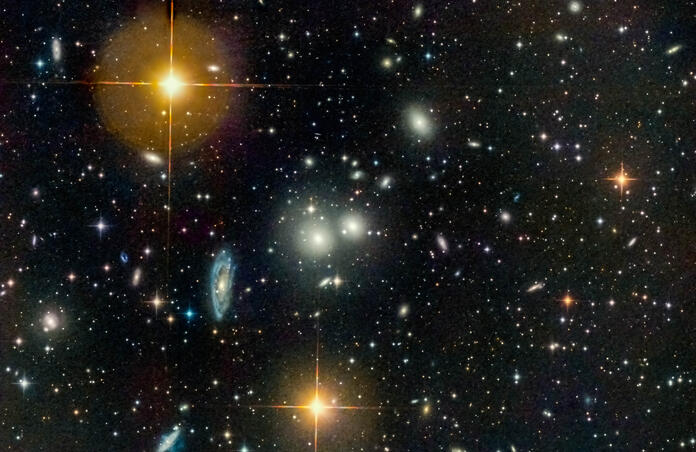The background color of space

Black is black. But not quite, really.
The background of space is not black. Aside from the noise, there is a faint signal. There is light from many sources in the sky background. These sources included sky glow and emission from other nearby objects.
One mistake new astrophotographers make is to make the black of space pure black. A pixel value of zero is pure black (pure white = 255). This can happen by clipping the black values during a stretch or by increased contrast. This makes the black darker and the light lighter, but in the process, you lose data. These are the pixels that contain values but are thrown away when clipped.
Some of the data that gets thrown away may be faint nebulosity.
Astrophotographers should strive to keep as much actual data as possible, and sometimes the deep black of space needs to be lighter than black.
One technique that can be applied is changing levels to change the black point.
Examine the pixel values, and as stated, it should not be zero, nor should it be set too high. A good starting value is around 30 in each of the RGB channels.
The goal is to get the background as dark as possible without losing the faint signal.
A pure black sky may be our mental picture of deep space, but it does not represent reality and will tend to look unnatural and over processed.
So, keep it on the lighter side.
#### 08JUL2021
THE HYDRA CLUSTER ABELL 1060 - PRO DATA SET
Abell 1060
The Hydra Cluster is a galaxy cluster that contains 157 bright galaxies, appearing in the constellation Hydra. The cluster spans about ten million light-years and has an unusually high proportion of dark matter. The cluster is part of the Hydra-Centaurus Supercluster located 158 million light-years from Earth. Wikipedia
Number of galaxies: 157
Credits
Pro Dataset by Alex Curry; Processing- Jim DeLillo
This blog post was originally published in our Telescope Live Community.
The Community represents Telescope Live's virtual living room, where people exchange ideas and questions around astrophotography and astronomy.
Join the conversation now to find out more about astrophotography and to improve your observation and post-processing skills!
